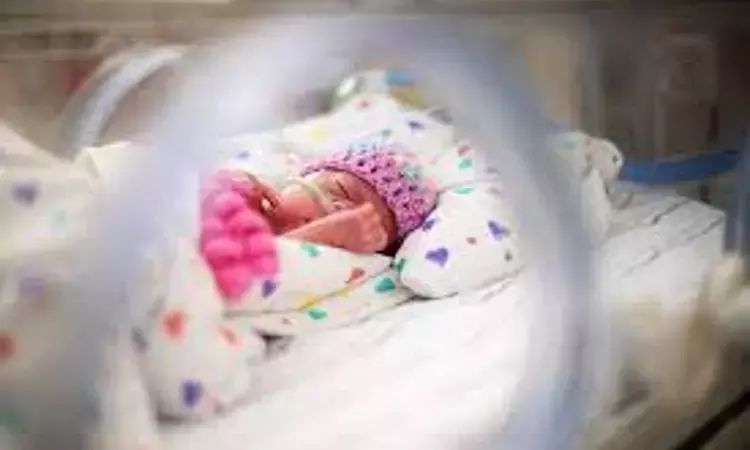- Home
- Medical news & Guidelines
- Anesthesiology
- Cardiology and CTVS
- Critical Care
- Dentistry
- Dermatology
- Diabetes and Endocrinology
- ENT
- Gastroenterology
- Medicine
- Nephrology
- Neurology
- Obstretics-Gynaecology
- Oncology
- Ophthalmology
- Orthopaedics
- Pediatrics-Neonatology
- Psychiatry
- Pulmonology
- Radiology
- Surgery
- Urology
- Laboratory Medicine
- Diet
- Nursing
- Paramedical
- Physiotherapy
- Health news
- Fact Check
- Bone Health Fact Check
- Brain Health Fact Check
- Cancer Related Fact Check
- Child Care Fact Check
- Dental and oral health fact check
- Diabetes and metabolic health fact check
- Diet and Nutrition Fact Check
- Eye and ENT Care Fact Check
- Fitness fact check
- Gut health fact check
- Heart health fact check
- Kidney health fact check
- Medical education fact check
- Men's health fact check
- Respiratory fact check
- Skin and hair care fact check
- Vaccine and Immunization fact check
- Women's health fact check
- AYUSH
- State News
- Andaman and Nicobar Islands
- Andhra Pradesh
- Arunachal Pradesh
- Assam
- Bihar
- Chandigarh
- Chattisgarh
- Dadra and Nagar Haveli
- Daman and Diu
- Delhi
- Goa
- Gujarat
- Haryana
- Himachal Pradesh
- Jammu & Kashmir
- Jharkhand
- Karnataka
- Kerala
- Ladakh
- Lakshadweep
- Madhya Pradesh
- Maharashtra
- Manipur
- Meghalaya
- Mizoram
- Nagaland
- Odisha
- Puducherry
- Punjab
- Rajasthan
- Sikkim
- Tamil Nadu
- Telangana
- Tripura
- Uttar Pradesh
- Uttrakhand
- West Bengal
- Medical Education
- Industry
in neonates & infants, Transcatheter PDA closure is better than surgery: Study

In neonates & infants, Transcatheter PDA closure is better than surgery, according to a recent study published in the Journal of the American Heart Association.
Pharmacologic therapy for patent ductus arteriosus closure is not consistently successful. Surgical ligation (SL) or transcatheter closure (TC) may be needed. Large multicenter analyses comparing outcomes and resource use between SL and TC are lacking. A group of researchers hypothesized that patients undergoing TC have improved outcomes compared with SL, including mortality, hospital and intensive care unit length of stay, and mechanical ventilation.
Using the 2016 to 2020 Pediatric Health Information System database, characteristics, outcomes, and charges of patients aged <1 year who underwent TC or SL were analyzed. A total of 678 inpatients undergoing TC (n=503) or SL (n=175) were identified. Surgical patients were younger (0.1 versus 0.53 years; P<0.001) and more premature (60% versus 20.3%; P<0.001). Surgical patients had higher mortality (1.7% versus 0%; P=0.02). Using inverse probability of treatment weighting by the propensity score, multivariable‐adjusted analyses demonstrated favorable outcomes in TC: intensive care unit admission rates (adjusted odds ratio [OR], 0.2; 95% CI, 0.11–0.32; P<0.001); mechanical ventilation rates (adjusted OR, 0.3; 95% CI, 0.19–0.56; P<0.001); and shorter hospital (adjusted coefficient, 2 days shorter; 95% CI, 1.3–2.7; P<0.001) and postoperative (adjusted coefficient, 1.2 days shorter; 95% CI, 0.1–2.3; P=0.039) stays. Overall charges and readmission rates were similar. Among premature neonates and infants, hospital (adjusted difference in medians, 4 days; 95% CI, 1.7–6.3 days; P<0.001) and postoperative stays (adjusted difference in medians, 3 days; 95% CI, 1.1–4.9 days; P=0.002) were longer for SL.
Thus, transcatheter closure is associated with lower mortality and reduced length of stay compared with Surgical ligation. Rates of TC continue to increase compared with SL.
Reference:
Trend and Outcomes for Surgical Versus Transcatheter Patent Ductus Arteriosus Closure in Neonates and Infants at US Children's Hospitals by Michael T. Kuntz, et al. published in the Journal of the American Heart Association.
https://www.ahajournals.org/doi/10.1161/JAHA.121.022776
Dr. Shravani Dali has completed her BDS from Pravara institute of medical sciences, loni. Following which she extensively worked in the healthcare sector for 2+ years. She has been actively involved in writing blogs in field of health and wellness. Currently she is pursuing her Masters of public health-health administration from Tata institute of social sciences. She can be contacted at editorial@medicaldialogues.in.
Dr Kamal Kant Kohli-MBBS, DTCD- a chest specialist with more than 30 years of practice and a flair for writing clinical articles, Dr Kamal Kant Kohli joined Medical Dialogues as a Chief Editor of Medical News. Besides writing articles, as an editor, he proofreads and verifies all the medical content published on Medical Dialogues including those coming from journals, studies,medical conferences,guidelines etc. Email: drkohli@medicaldialogues.in. Contact no. 011-43720751


